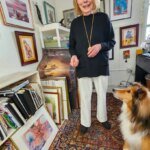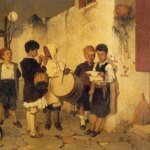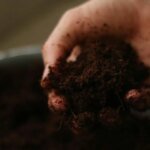
From brushmakers to glassblowers, and saddlers to weavers, we meet the people keeping traditional crafts alive in the UK
Amanda Thrower has been making paint brushes for 27 years. For her, and the other women at Crown, the Winsor & Newton brush factory in Lowestoft, Suffolk, this isn’t just a job – it’s a vocation, a passion, and a skilled craft with a long history.
Amanda is one of just 11 brushmakers in the world who can make Winsor & Newton’s iconic Kolinsky Series 7 brush by hand, using the same techniques that have been employed since the company was founded almost two centuries ago. Most of those brushmakers are women, and they all work from the Lowestoft factory. While the word ‘factory’ may conjure images of machinery and automation, this couldn’t be further from the reality of the hand-crafted brushes.
“I can’t imagine them being made by machine, because they are so intricate,” says Thrower. “You have to get the correct shape, a nice shape. I take pride in each one that I make and I know the quality is there. I don’t know if you’d get the same quality and shape if you used machines.”
Her colleague Clara Marques is a comparatively new recruit, having worked at the factory for five years. “I felt very welcome, and my colleagues passed me their knowledge,” she says. “[Before working here] I never thought the brushes were made by hand. It’s an amazing skill. When I made my first brush with the right shape, it was an amazing feeling.”
Handcrafts are often passed through families, particularly by women to younger female relatives. Historically, women often worked at home with textiles, and the skill involved wasn’t always highly-regarded. Despite women making many of the intricate and desirable textiles of the Arts and Crafts movement of the late 1800s onwards, the era is usually associated with men, like William Morris. The brush factory, though, wouldn’t be where it is today without women. That’s meant in a literal sense – operations moved to Lowestoft because of a particular female workforce.
I can’t imagine them being made by machine. They are so intricate
The Lowestoft factory has been operating for almost 80 years, but before 1946, brushes were made in London. In the period of economic recovery after the second world war, former brushmakers looked for more lucrative employment in the capital. The company decided to relocate to where the required craftspeople were, rather than try to recruit new brushmakers in London. The fishing industry in Lowestoft, where nets were handmade by local women, provided the answer. Part of the brushmaking process involves knotting thread around the brush’s hairs, and the net makers were already dextrous with thread. Just as net making ran in families, brush making followed the same trajectory.
“When I first started here, there were a lot of mothers and daughters,” says Thrower. “Twenty years ago it was extended families who worked here – mothers, daughters, aunts and nieces.”
Today, the brushmakers aren’t related, but the workforce is still largely female. Men are welcome to apply for brushmaking jobs, of course, but Thrower explains that small hands are an advantage when it comes to making the slimmest brushes. Each hair in the tip has to be painstakingly positioned by hand to achieve the curve of the brush.
As for the hairs themselves, they come from sable (a relative of the weasel) and hog tails. Factory manager Mark Brindle acknowledges that the use of animal products in a company that’s trying to improve its sustainability and ethical credentials as a new B Corp presents a challenge.
“We do offer synthetic brushes for people who don’t want animal products, but the problem with those is they’re not as sustainable,” he says. “Synthetic fibres are made from petrochemicals derived from fossil fuels. The hog tails are a by-product from pigs that are bred for food, and would otherwise be discarded. The sable aren’t farmed, they’re wild animals trapped as pests by farmers in Siberia and parts of China.”
It’s an amazing skill. When I made my brush with the right shape, it was an amazing feeling
Weasel hair is a “plan B”, Brindle says, for when sable stock runs out, as the company no longer trades with Russia. But could fur be phased out entirely? “That is the overriding challenge,” he says. “The world is questioning whether fur as a commodity is acceptable. Better synthetics are being developed that are made of grains and pulses, for example, for toothbrush bristles. In the last 12 years, the gap between synthetic fibres and hair has closed a lot, but the fibres still aren’t good enough for a fine art brush. I think within the next five years though, they could be.”
Even if the materials used to make the brush are changed to eliminate animal products, one thing that won’t change is the skill and craftsmanship that goes into making the Kolinsky Series 7 range. More trainees have been recruited to ensure the craft of brushmaking continues to be passed through generations and kept alive.
“I still enjoy it, after 27 years,” says Thrower. “I think it’s lovely to keep a tradition going and keep the factory active. So much is made by machine now, the fact they’re handmade is a great selling point.”
Thriving crafts
Paint brushes aren’t the only items that need a human touch to ensure their quality. Some other items are still made the traditional way in the UK, too.
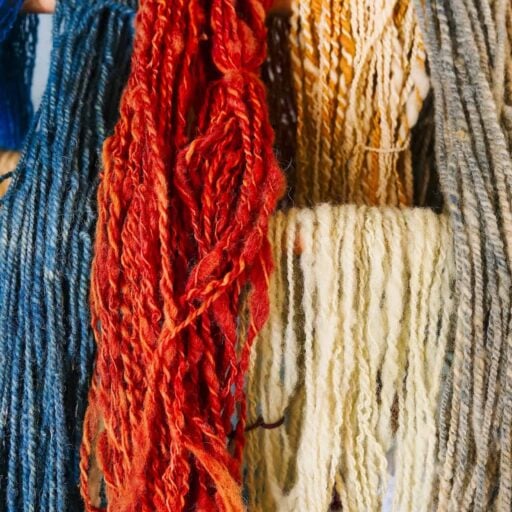
The UK’s rug-weaving history dates back to the 17th century, when rugs and carpets were hand made by knotting. The textile designer and social activist William Morris experimented with rug weaving on a loom in the 1870s, and this handcrafted method endures across the UK today. Jenny Wilkinson still uses a traditional loom to make her handwoven rugs in Devon. Wilkinson, who studied at Central Saint Martins (previously St Martin’s School of Art) in London, sources the wool for her rugs from her own herd of sheep and makes many of her own dyes from herbs and spices. “My textiles are made in the context of work with land, hedgerow, woodland, habitat, conservation and garden,” she says. “This is contemporary work, rooted in tradition.”
Image: Eric Prouzet
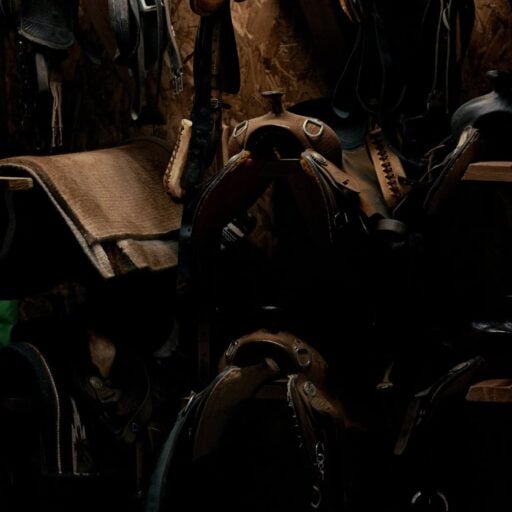
The technique to make saddles has remained virtually unchanged for centuries, according to the UK-based charity Heritage Crafts. Saddlery courses are offered by some saddlers’ societies and specialist colleges to ensure new craftspeople are being trained up. A saddler will cut, shape and stitch the layers of leather together, with a single saddle taking many days to make. Training courses can still be found via The Society of Master Saddlers. Catherine Baker is the vice-president of The Society of Master Saddlers and has been making saddles for more than 20 years. “I am hugely passionate about creating bespoke bridles for my clients and each piece is handcrafted in my workshop in Wiltshire,” says Baker. “From making the first cut to the last stitch, every process is done using traditional saddlery techniques by hand.”
Image: Levi Arnold
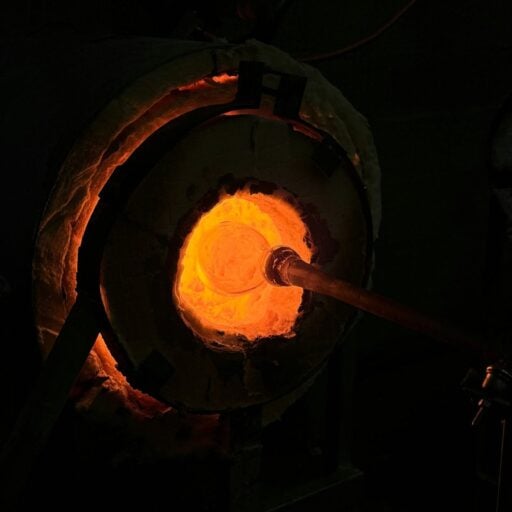
There are still many glassblowing studios across the UK, making everything from lighting and jars to ornaments and vases. Some studios offer glassblowing experiences for novices who want to try their hand at the craft, and welcome visitors who are curious to see glassblowing in action. Erin Isaksson is a Swedish glassblower and designer working in Scotland. She made the move in 2001 to study for her BA (hons) in glass at Edinburgh College of Art (ECA) “I always try to capture something from the environment that expresses an essence of its natural beauty to my own senses,” she says.
Image: Marc Colonna D’stria
Main image and other photography: Winsor & Newton



